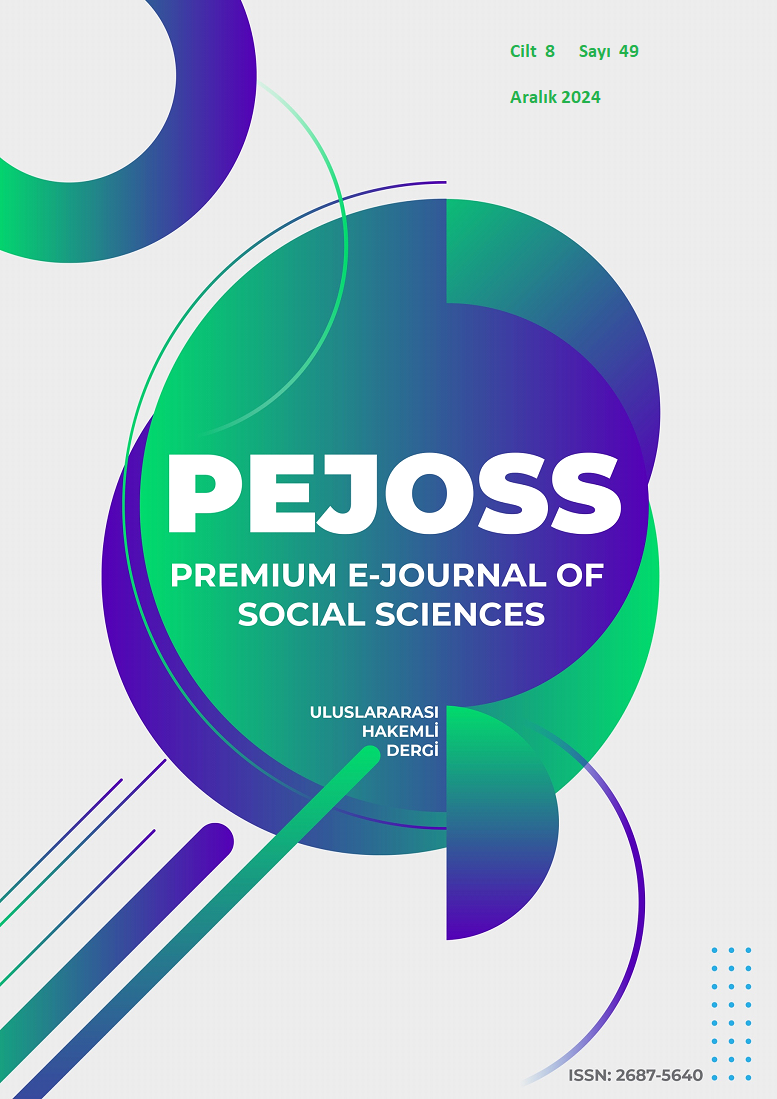Minimalist Opera and Piano Music with Postmodernist Approach
DOI:
https://doi.org/10.5281/zenodo.14580275Keywords:
Postmodernism, minimalism, piano music, operaAbstract
Minimalism is an art movement that emerged in the mid-20th century and is characterized by simplicity, temporal expansion and repetition. This study focuses on how basic elements such as repetition, simplicity, stasis and micro-transformation in minimalist music harmonize with postmodernism's understanding of multiple meanings and freedom of form. While minimalist music challenges the modern understanding of music with its structure based on repetition and simplicity, postmodernism embodies the plurality of different narrative structures and identities. In this context, minimalist opera and piano music offer a relationship that redefines the postmodern paradigm in narrative and aesthetic terms. Minimalist opera and piano music are complementary elements within the postmodernist understanding of art. While minimalism uses the piano both as a solo instrument and as a dramatic building block in opera, postmodernism imposes the function of adding meaning to this process. Postmodernism rejects the notion of a single “truth” or “universal” and advocates pluralism and individuality. This approach is in natural harmony with minimalism's understanding of art. Minimalism emphasizes the expressive power of essence and repetition by reducing ornamentation and dramatic intensity.
It has been observed that minimalist opera establishes a new relationship between music and text by rejecting traditional dramatic structures in storytelling. Especially the works of composers such as Philip Glass, Steve Reich and John Adams were evaluated through postmodernist narrative techniques and aesthetic approaches. As in every period of opera, the piano is an important instrument in minimalist music. The piano is an ideal instrument to convey the repetitive and hypnotic structure of minimalism in solo and ensemble works. At the same time, in minimalist operas, the piano is used as an essential element that enhances the dramatic expression on stage. The combination of minimalist piano and opera is a story of transformation that expands the boundaries of art and invites the audience to re-evaluate their own perception of time and space. The study aims to show how minimalist music has gained a new meaning with a postmodernist approach and to discuss the artistic creation process arising from the interaction of these two aesthetic paradigms.
Downloads
References
Ashby, A. (2005). Minimalist opera. Cambridge Companion to Twentieth-Century Opera, (p. 244-266).
Cambridge University Press.
Fink, R. (2005), Repeating Ourselves: American Minimal Music as Cultural Practice. Published by: University of California Press.
Griffiths, P. (2011). Modern Music and After. Oxford University Press
Jencks, C. (1992). The post-modern agenda. In The Post-modern reader. (p. 10-39). New York: St.
Martin’ Press.
Johnson, T. A. (2011). John Adams’s Nixon in China: Musical Analysis, Historical and Political Perspectives, Journal of the Society for Musicology in Ireland, 8(2012–13). 93-98.
Keith, P. (2002). Four Musical Minimalists: La Monte Young, Terry Riley, Steve Reich, Philip Glass. Cambridge University Press
Mertens, W. (1983). American Minimal Music: La Monte Young, Terry Riley, Steve Reich, Philip Glass, Kahn & Averill.
Say, A. (2022). Müzik Tarihi. Islık Yayınları.
Schwarz, K. R. (1999), Minimalists. American Music, 17(2), 225-229.
Strickland, E. (2000), Minimalism: Origins. Indiana University Press.
Yıldız, H. (2015). Postmodernizm Nedir? Dumlupınar Üniversitesi Sosyal Bilimler Dergisi 13(2015).
Downloads
Published
How to Cite
Issue
Section
License
Copyright (c) 2024 Premium e-Journal of Social Science (PEJOSS)

This work is licensed under a Creative Commons Attribution 4.0 International License.


